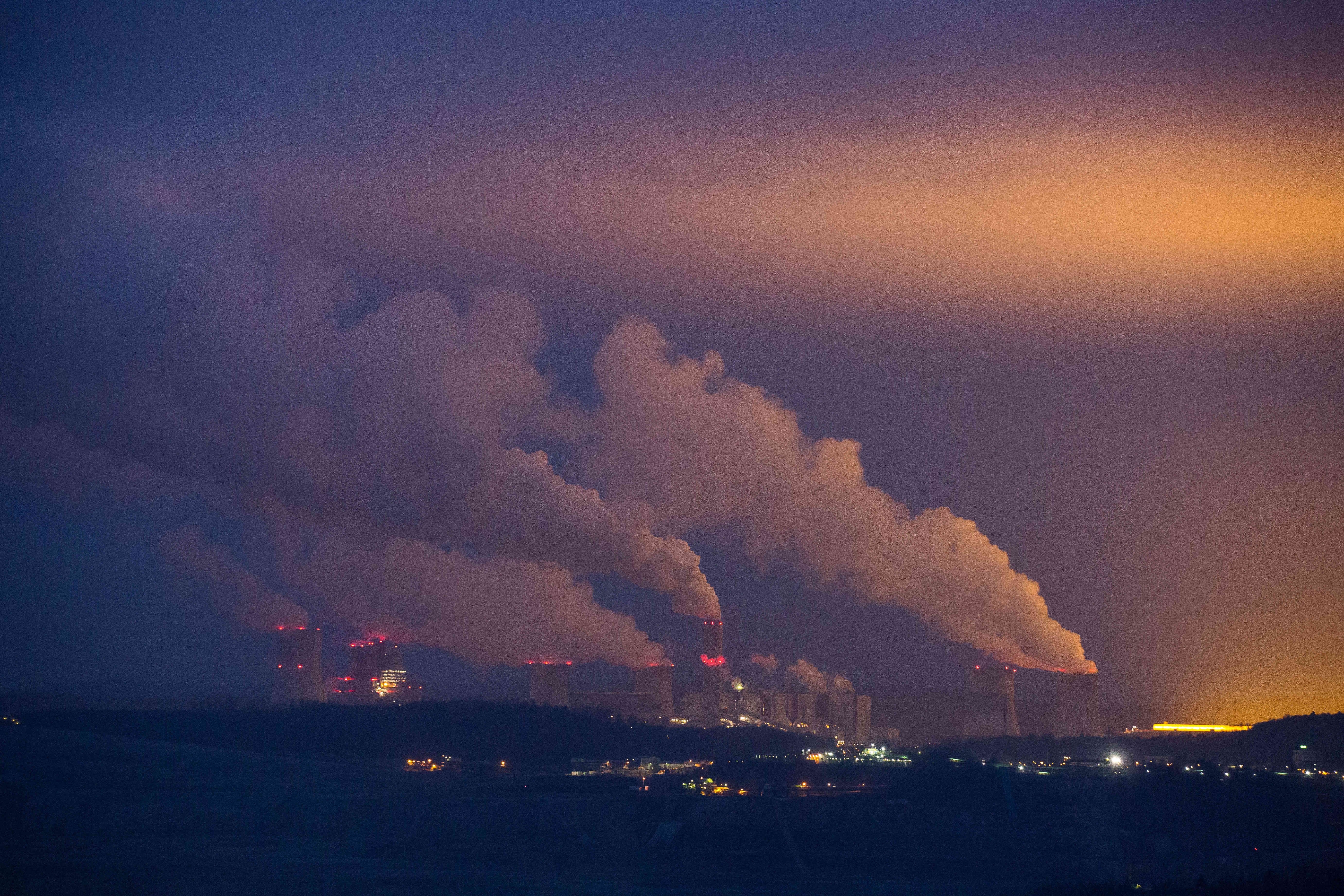Ambitious Plans and Economic Pragmatism - China in the Face of Climate Change
 Photo: Carlos Garcia Rawlins/Reuters
Photo: Carlos Garcia Rawlins/Reuters
Along with economic development, China’s electricity consumption has rapidly increased—in 2020 alone it jumped by nearly 200 terawatts (TW), or 4% compared to 2019. Although electricity production is increasingly using renewable energy sources (RES, 25% of the energy mix in 2020), and nuclear power plants (5%), the majority is still produced in coal-fired power plants (56.8%, just 0.9 pp less than in 2019). This dependence on fossil fuels, combined with the size of the economy makes China the largest global emitter of GHGs. According to the Global Carbon Project, in 2020 it was responsible for 28% of emissions, while the U.S. had 15%. Changes in the energy system are challenging China’s development, but the authorities also see them as an opportunity for its economy.
Internal Situation
For the CPC, environmental protection has become an important factor in maintaining credibility with Chinese society. Nearly 80% of Chinese are concerned about the impact of climate change on their daily lives. The ecological transformation of the economy is seen as an instrument for changing the development model. In both the five-year (2021-2025) and long-term (until 2030) plans, the authorities recognise environmental protection as a priority, but specific emission limits were not incorporated into the documents. In 2019, China spent more than $80 billion on research and development in the green energy sector (for comparison, the figure for the U.S. was $55.5 billion, and for Japan, $16.4 billion). The Chinese authorities estimate that more than $14 trillion will be needed to achieve the 2060 carbon neutrality goal (the EU’s Green Deal assumes spending of more than €0.5 trillion in the years 2021-27).
Climate-related decisions, however, face difficulties due to internal economic and political conditions. The main body responsible for issuing recommendations on pollutant emissions in individual industries and supervising their implementation is the National Development and Reform Commission (NDRC). The results at the provincial and city levels indicate non-compliance in investments with “Xi’s ecological thought” and the need for changes in the investment plans. Local authorities, for example, in Hunan, often accept energy-intensive investments to ensure the success of economic plans. The fulfilment of these plans factors into evaluations of the officials and their careers.
Another obstacle to the achievement of the NDRC goals is a deficit in electricity supply (mainly for industrial consumers), which can be most easily mitigated by greater use of coal. In September 19 provinces were affected by power shortages. Due to the large demand, the price of raw material, and access problems, the central authorities ordered energy companies to stockpile coal and oil for the winter, and prohibited the provinces from closing coal-fired power plants without the approval of the central government. The determination of the authorities to implement emission limits means that every year there are problems with heating, mainly where coal-fired power plants have been closed or moved, gas infrastructure is underdeveloped, and subsidies too low. Negotiations are also underway on new contracts for LNG supplies, including from the US. In the current situation, the authorities, in order to prevent electricity shortages, are supporting coal mining projects in China and importing coal from abroad (including from suppliers new to China, such as South Africa or Mozambique). China has even unblocked the import of coal from Australia, suspended earlier for political reasons. China is also developing its nuclear sector, where already there are than 40 reactors in operation and Chinese companies are building another 14. The domestic market for CO2 emissions trading, launched in July, has had limited effect in reducing emissions. Prices are relatively low for now—$7.70 per tonne in October compared to about $70 in the EU—and the system covers only the electricity industry, which is responsible for about 40% of emissions. However, the price is expected to rise, and the system extended to other sectors over time.
International Activity
The international context of climate protection acquired special importance for China after the U.S. left the Paris Agreement. This allowed China to present itself as a country committed to environmental protection and contrast itself with the United States. After the U.S. returned to the deal, climate remained an important element of China’s foreign policy.
China actively participated in the 2015 Paris Agreement negotiations, calling for proportionally lower emissions reduction commitments for developing countries (it ratified the agreement in 2016). In 2020, President Xi Jinping announced during the UN General Assembly (UNGA) that China would reach peak CO2 emissions around 2030, and by 2060 it would reach carbon neutrality (net zero carbon dioxide emissions). During this year’s UNGA, he declared that China will no longer participate in the construction of coal-fired power plants abroad. The aim was in part to show China’s readiness to respond to the demands of the international community. So far, Chinese entities have been involved in about 13% of the coal projects around the world, including in Pakistan and Egypt. Chinese banks have distanced themselves from similar investments before, and often participate in RES projects, which resulted from the declining global interest in energy from coal. Between 2015-2019, RES initiatives already accounted for over 50% of China’s foreign investments in energy projects, although their implementation (e.g., in West Africa) was often unsuccessful.
The RES sector key to increasing the competitiveness and innovation of the Chinese economy. Chinese companies, backed by state support usually in the form of subsidies, successfully compete with enterprises from the U.S., EU, South Korea, Japan, and elsewhere. They have a strong position, for example, in the global solar panel market (accounting for 80% of production). They also often play a key role in global supply chains, such as providing electric batteries to the automotive sector. They are active in seeking modern technologies related to renewable energy and environmental protection that can be taken over (e.g., projects in Poland). They are involved in the construction of solar and hydropower plants in South America and Asia. Foreign investments in nuclear energy remain of Chinese interest, although so far they have been carried out only in Pakistan.
Conclusions and Perspectives
The issue of China reducing its GHG emissions will become one of the main topics of COP26 in Glasgow in November. It is important for China to make steep reductions to limit global temperature rise to the 1.5℃ in the Paris Agreement. Xi Jinping will not take part in COP26, but China’s chief negotiator, Xie Zhenhua, suggested that at the conference China will confirm the goal of reaching peak CO2 emissions by 2030. The Chinese also will declare a reduction in coal consumption from 2026. China is sceptical about the negotiations however, such as stricter limits on methane emissions, considering there to be a lack of mechanisms for monitoring them.
The Chinese authorities are aware of the difficulties in combining climate protection with the transformation of an economy based on energy-intensive production. This results in Chinese declarations being general in nature and the possibility of modifying them. Therefore, despite China’s pro-ecological slogans, the authorities will continue to invest in the coal sector for a long time. The stated goal of carbon neutrality by only 2060 will allow the CPC to control emissions reduction such that it should not hinder its rise to the prosperity level of a developed country by 2049, which is the date of “second centenary goal” for the 100th anniversary of the PRC. In this context, it is difficult to verify China’s real ability to meet the emission targets.
The EU and the U.S. should evaluate the implementation of China’s decisions, not only its declarations. Its failure to meet its international obligations or a lack of transparency in data provided may result in the use of special instruments by the EU, such as the taxation of products with a high carbon footprint. At the same time, climate issues will remain a bargaining chip for China in talks related to other disputes in relations with the EU or the U.S., including those concerning violations of human rights in China or unfair trade practices.





